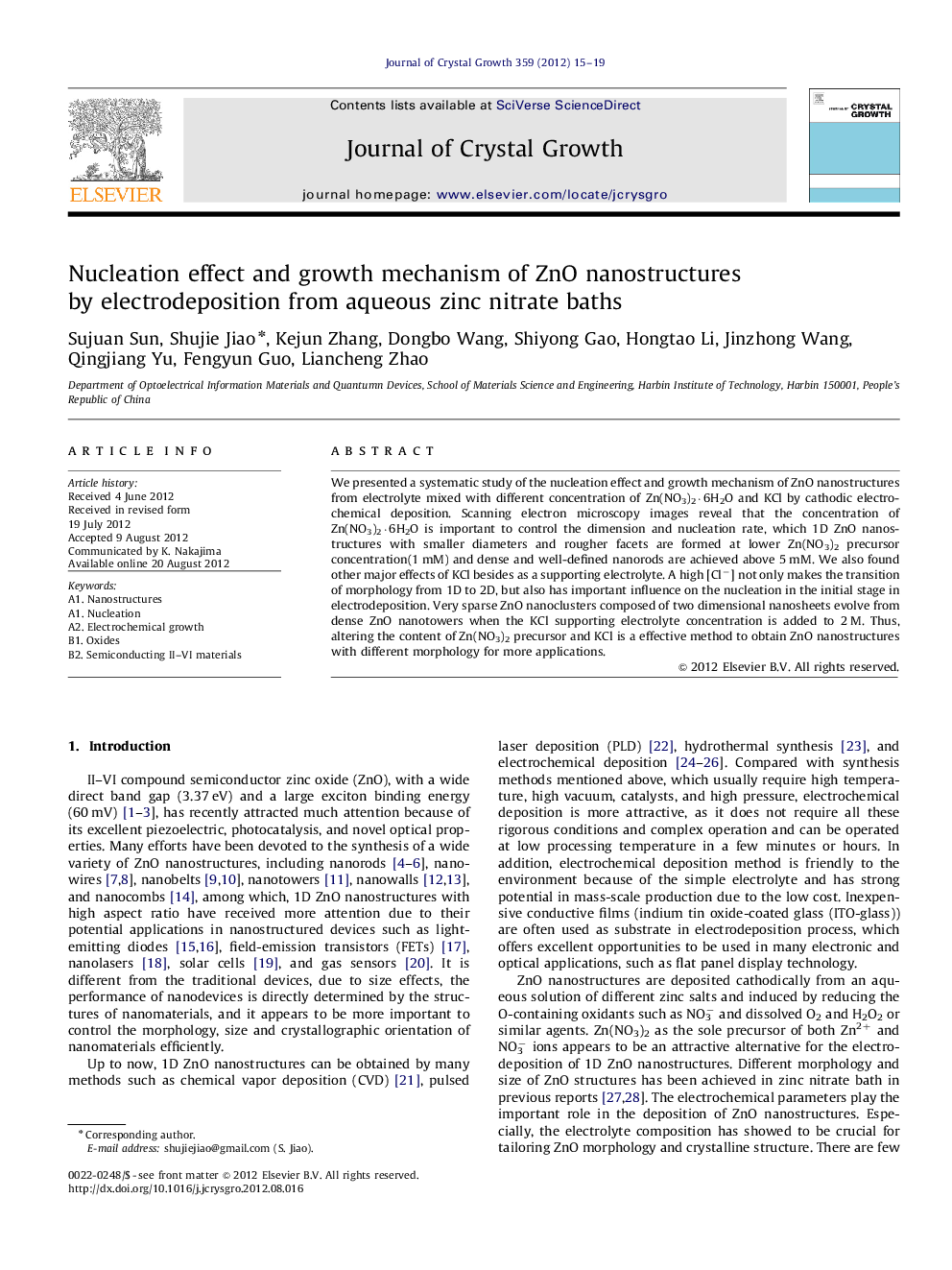| Article ID | Journal | Published Year | Pages | File Type |
|---|---|---|---|---|
| 1791490 | Journal of Crystal Growth | 2012 | 5 Pages |
We presented a systematic study of the nucleation effect and growth mechanism of ZnO nanostructures from electrolyte mixed with different concentration of Zn(NO3)2·6H2O and KCl by cathodic electrochemical deposition. Scanning electron microscopy images reveal that the concentration of Zn(NO3)2·6H2O is important to control the dimension and nucleation rate, which 1D ZnO nanostructures with smaller diameters and rougher facets are formed at lower Zn(NO3)2 precursor concentration(1 mM) and dense and well-defined nanorods are achieved above 5 mM. We also found other major effects of KCl besides as a supporting electrolyte. A high [Cl−] not only makes the transition of morphology from 1D to 2D, but also has important influence on the nucleation in the initial stage in electrodeposition. Very sparse ZnO nanoclusters composed of two dimensional nanosheets evolve from dense ZnO nanotowers when the KCl supporting electrolyte concentration is added to 2 M. Thus, altering the content of Zn(NO3)2 precursor and KCl is a effective method to obtain ZnO nanostructures with different morphology for more applications.
► Nuclei and growth mechanism of ZnO nanostructures were studied with [NO3−] and [Cl−]. ► A significant change from nanorod to nanowire is observed with the reduced [NO3−]. ► ZnO nanorods with well-defined hexagonal facet were achieved under 0.5 M [Cl−]. ► A high concentration of Cl− has been found to decrease the ZnO nucleation ratio.
